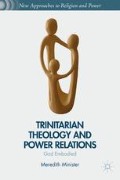Abstract
The Immortal Life of Henrietta Lacks tells the nonfiction story of Henrietta Lacks and the cancerous cells that were extracted from her body without her consent.1 These cancerous cells grew in lab cultures, even after Henrietta’s cancer caused her death, eventually providing medical scientists with the resources to vaccinate for polio, develop techniques for in vitro fertilization, and advance research in the study of cancer and genetics. In scientific literature, Henrietta’s cells are merely known as HeLa, a measure which, according to the doctors and scientists who first worked with the cells in the 1950s, served to protect the identity of Henrietta and her family. The reality of this anonymity is that, while Henrietta’s cells are reproduced in laboratories in the pursuit of medical progress, Henrietta’s family—bodies produced through the combination of the cells of the living Henrietta and her husband, David Lacks—cannot afford medical care.
Access this chapter
Tax calculation will be finalised at checkout
Purchases are for personal use only
Preview
Unable to display preview. Download preview PDF.
Notes
Rebecca Skloot, The Immortal Life of Henrietta Lacks (New York: Crown Publishers, 2010).
Laura Miller, “‘The Immortal Life of Henrietta Lacks’: The True Story of a Woman Whose Enormous Gift to Science Was Shamefully Repaid,” February 7, 2010. http://www.salon.com/books/laura_miller/2010/02/07/immortal_life_of henrietta_lacks. Accessed December 13, 2010.
See Robert W. Jenson, Systematic Theology (New York: Oxford University Press, 1997), 12.
Shelly Rambo, Spirit and Trauma: A Theology of Remaining (Louisville, KY: Westminster John Knox, 2010), 68.
Consider, for an example of a systematic theology that does take bodies seriously, Sarah Coakley’s new systematic theology, only the first volume of which has been released. See Sarah Coakley, God, Sexuality, and the Self: An Essay “On the Trinity” (Cambridge and New York: Cambridge University, 2013).
Leonardo Boff, Trinity and Society, trans. Paul Burns (Eugene, OR: Wipf and Stock, 2005, 1988), 11.
There are a few contemporary trinitarian theologies that defy the “systematic”/“practical” categorization and must be noted for their attempts to form trinitarian theologies directly in response to bodily realities. For example, Karen Baker-Fletcher develops a womanist understanding of the Trinity; Elizabeth Johnson develops a feminist understanding of the Trinity; A. Okechukwu Ogbonnaya and James Henry Owino Kombo develop African understandings of the Trinity; Jung Young Lee develops an Asian understanding of the Trinity; Sallie McFague and Ivone Gebara develop ecofeminist understandings of the Trinity; and Marcella Althaus-Reid queers the Trinity. Each of these trinitarian theologies represents a move toward identifying the embodied roots of trinitarian theology. Specifically, each of these theological constructions identifies a particular cultural location and the necessity of developing trinitarian theology in response to that particular cultural location. Although Jung Young Lee’s theology operates in a framework relatively familiar to Western trinitarian theologians (as his book centers on three chapters on the Father, Son, and Spirit), Karen Baker-Fletcher and James Henry Owino Kombo develop constructive proposals that establish alternative frameworks for exploring trinitarian theology. These alternative frameworks do not capitulate to the structures of so-called normative theology but challenge those structures in response to the particularities of bodies. See Baker-Fletcher, Dancing with God: The Trinity from a Womanist Perspective (St. Louis, MO: Chalice Press, 2006);
Elizabeth A. Johnson, She Who Is: The Mystery of God in Feminist Theological Discourse, 10th anniversary ed. (New York: Crossroad, 1992);
A. Okechukwu Ogbonnaya, On Communitarian Divinity: An African Perspective of the Trinity, 1st ed. (New York: Paragon House, 1994);
James Henry Owino Kombo, The Doctrine of God in African Christian Thought: The Holy Trinity, Theological Hermeneutics, and the African Intellectual Culture, Studies in Reformed Theology (Leiden; Boston: Brill, 2007);
Jung Young Lee, The Trinity in Asian Perspective (Nashville, TN: Abingdon Press, 1996);
Sallie McFague, The Body of God: An Ecological Theology (Minneapolis, MN: Fortress Press, 1993);
Ivone Gebara, Longing for Running Water: Ecofeminism and Liberation (Minneapolis, MN: Fortress Press, 1999);
Marcella Althaus-Reid, The Queer God (London; New York: Routledge, 2003).
For a recent example of a theologian who uses the incarnation to affirm the body, see Norman Wirzba, Foodand Faith: A Theology of Eating (Cambridge and New York: Cambridge University, 2011), 202.
Stephen Prothero, American Jesus: How the Son of God Became a National Icon (New York: Farrar, Straus, and Giroux, 2003).
Bernard McGinn, Apocalyptic Spirituality: Treatises and Letters of Lactantius, Adso of Montier-En-Der, Joachim of Fiore, the Franciscan Spirituals, Savonarola (Mahwah, NJ: Paulist, 1979), 104ff.
Mary Ruefle, Madness, Rack, and Honey: Collected Lectures (Seattle and New York: Wave Books, 2012), 131. Emphasis hers.
See George Lakoff and Mark Johnson, Philosophy in the Flesh: The Embodied Mind and Its Challenge to Western Thought (New York: Basic Books, 1999);
Lakoff and Johnson, Metaphors We Live By (Chicago, IL: University of Chicago Press, 1980).
Marcia W. Mount Shoop, Let The Bones Dance: Embodiment and the Body of Christ (Louisville, KY: Westminster John Knox Press, 2010).
Alice Walker, The Color Purple (Orlando, FL: Harcourt Press, 1982), 196.
Sarah Poor describes the elision of the female body in relation to Mechthild. See Sara S. Poor, Mechthild of Magdeburg and Her Book: Gender and the Making of Textual Authority, Middle Ages Series (Philadelphia: University of Pennsylvania Press, 2004).
Copyright information
© 2014 Meredith Minister
About this chapter
Cite this chapter
Minister, M. (2014). Introduction: Trinitarian Theologies and the Elision of Material Bodies. In: Trinitarian Theology and Power Relations. New Approaches to Religion and Power. Palgrave Macmillan, New York. https://doi.org/10.1057/9781137464781_1
Download citation
DOI: https://doi.org/10.1057/9781137464781_1
Publisher Name: Palgrave Macmillan, New York
Print ISBN: 978-1-349-49935-9
Online ISBN: 978-1-137-46478-1
eBook Packages: Palgrave Religion & Philosophy CollectionPhilosophy and Religion (R0)

